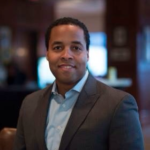The following guest post was authored by Chris Motley, Founder and CEO of Better Weekdays.
How often do you find yourself watching your favorite team playing against a league powerhouse, and then ask, “Man, if only we had THAT guy?” Probably more often than not, regardless of how successful your team may be. In sports scouting, or recruiting, there is a science with the secrets to success being as coveted as the players themselves. The same should be true for corporate recruiting.
Historically, companies have used a passive recruiting process. In a time where competition among business has never been greater, the emergence of active recruiting has become necessary. So what needs to change to make the transition?
 Passive recruiting is the traditional process of finding a candidate. A known amount of job openings exist, and so postings for them are created. From there, recruiters vet through resumes, and then screen selected candidates, passing the process down from one person to the next until the agreed upon candidate is found.
Passive recruiting is the traditional process of finding a candidate. A known amount of job openings exist, and so postings for them are created. From there, recruiters vet through resumes, and then screen selected candidates, passing the process down from one person to the next until the agreed upon candidate is found.
On the other hand, active recruiting is when the known amount of job openings is determined, and the ideal set of skills and values is determined. Instead of only letting candidates come to the job posting, recruiters set out to find candidates who possess that unique set through college campuses, digital networks, and other existing forums. It is this theory that practices matching the talent with the brand.
The biggest difference between active and passive selling is one thing: sales. Brands must not only sell belief in their product, but also their corporate mission, culture, and existing talent pool to recruit top job candidates – a classic economic case of supply and demand.
Okay, so point taken, I need to not always sit back in my ergonomic desk chair and wait for the windfall of resumes. How then do I compete with that buzzy, non-revenue producing startup down the road from me though? How do I create demand to work at my company, so they in turn can help my company to grow, which would then create more jobs to hire for? More so, how do I accomplish this with a limited budget?
Being ahead of the curve is going to be your biggest help in activating this type of recruitment process. Once a strategy is created and agreed upon, start as soon as possible in order to keep practicing and improving upon your process. While it will certainly take some investment dollars, the amount of resources available at little to no cost along with the return on investment (ROI) can make the venture more than worthwhile.
When first starting, make sure that awareness is the cornerstone of your plan. Creating content must be an ongoing effort, whether it be social media profiles or blog posts that pertain to company values and positive internal affairs. Over time, this will generate leads and interest in your company.
When you have your channels in place to create and distribute awareness, the next step is to have your calendar outlined. This will help keep everyone on par for frequency and types of content to create. In addition, understanding lead time for various pieces is a crucial part in the process. Internal projects frequently tend to be pushed to the bottom of the priority list. Accounting for this when assigning tasks will help to allocate appropriate resources, and get the project done when needed.
Make sure, if using multiple channels for distribution, that you still keep them aligned and consistent with each other. Google is a powerful beast, and it’s not at all uncommon for someone to click multiple links pertaining to your company when doing their research. If at any time the messaging out there conflicts with each other, it could jeopardize the perception and trust that took so much time and investment to build. Similarly, if a post you find particularly important to what your company and brand stands for is missing from a channel it could be a missed opportunity to talent that has only viewed that particular page. It can take days to build interest within a person, but only seconds to disengage them. Ideally, you want to centralize your content generation and distribution for consistency and efficiency.
It’s just as important for your recruiting department to be centralized. When an onslaught of applicants come through applying for available jobs at your company keeping processes in check, and knowing the skills and values that is expected for a particular position will ensure that the top candidate is hired. From an internal perspective you will be able to ensure appropriate attention to the candidate. On the other side, the candidate will have an exceptional experience to remember your company as they go through their job search.
Note that anyone can have a great strategy and process on paper. This is when and how job negotiations happen. Only when it is in action will you know if it can actually be successful. Always measure, and always evolve. Whatever steps you enlist for your active recruitment, make sure there is a way to track and measure the outcomes. If available, put them against historical benchmarks of past efforts. If the results are lower than you expected, or decrease over time, do not be afraid to adjust where needed. Whether it’s early on, or down the road embrace the fact that changes made need to happen to support others as needed and align resources.
Active recruiting is a practice that is constantly happening. Be aware of everything that happens in your company, and promote the positives. It all plays a significant role in recruiting top talent for your team.

